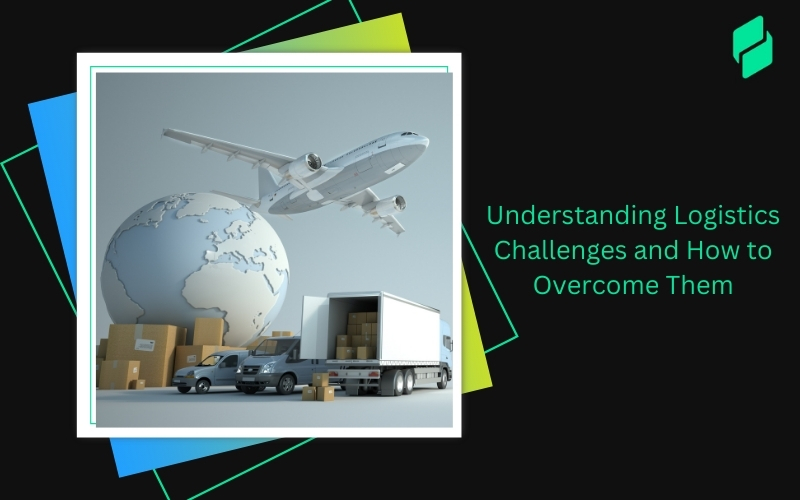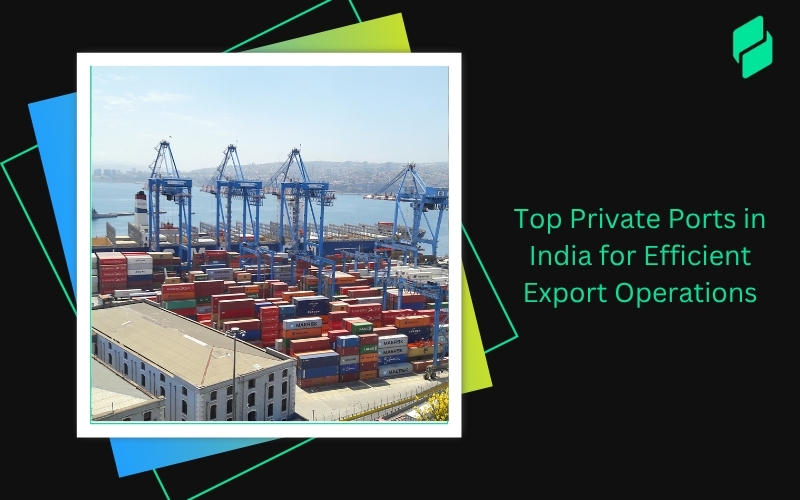Export procedures are rules and requirements that must be followed when goods from the European Union (EU) customs territory are sent to other countries. These procedures aim to ensure that the export measures, such as export restrictions and surveillance, are correctly applied.
The procedure is mandatory for most Union goods leaving the EU customs territory, with only a few exceptions.
Optimize your business: use unlimited savings with Pazago fulfilled now!
Get Started ->Union Goods:
A union good in export refers to an item or commodity that is exported from one nation to another and is governed by collective bargaining agreements or produced by unionized workers.
Its significance lies in promoting fair labor practices, upholding workers' rights, and ensuring quality and safety in production.
Union goods also boost the exporting country's reputation for ethical labor standards, potentially leading to greater demand and higher prices in the international market, which benefits both the workforce and the economy of the exporting country.
Export procedure for Union goods exiting the EU customs territory and merchandise transportation out of the U.S.
The procedure must be followed when Union goods are being exported from the EU customs territory. This involves two stages. First, the exporter or declarant presents the goods, the export declaration, and any necessary export license at the customs office responsible for their location.
The export declaration must be submitted electronically through the Export Control System (ECS), although oral declarations may be allowed in certain cases. The customs office then releases the goods and transmits the details of the export declaration to the customs office of exit.
After the export declaration is processed, the goods are presented at the customs office of exit. This office examines the goods to ensure they match the declaration and oversees their physical departure. Goods declared for export are under customs supervision until they leave the EU customs territory.
Significance of adhering to regulations to ensure imports are genuine, safe, and lawfully sourced
Adhering to export regulations is crucial to ensure that imported goods are authentic, safe, and obtained legally. By following the procedure, customs authorities can verify the accuracy of the information provided by exporters and ensure that the goods being exported comply with all applicable laws and regulations.
This helps prevent the export of prohibited or restricted items and maintains the integrity of the export process.
Overview of the collaborative effort between customs and exporters to comply with laws and regulations.
Compliance with export laws and regulations requires collaboration between customs authorities and exporters. Customs offices play a vital role in enforcing export controls and verifying the accuracy of export declarations.
They work closely with exporters to ensure that all necessary documentation is provided and that the goods meet the required standards.
On the other hand, exporters are responsible for accurately declaring the goods being exported and providing any supporting documents or licenses as required. They must cooperate with customs authorities throughout the export procedure to ensure smooth and lawful operations.
By working together, customs and exporters can promote the integrity of the export process, prevent illegal activities, and facilitate the legitimate movement of goods across borders.
Procedure Stages and Definitions

Let us look at the procedure stages and definitions:
Stages of the export process
The key stages of the export process are:
- Submission of the export declaration - The exporter must submit a declaration to the customs office responsible for their location. This provides details of the goods.
- Release of goods - The customs office will release the goods and share export details with the office of exit.
- Presentation to Office of Exit - The goods must be presented to the office of exit. This office will examine the goods and supervise physical departure from the EU.
- Transport handover - For goods transported internationally, the office of exit may be where the goods are handed over for onward transportation.
- Customs supervision - The goods remain under customs monitoring from initial declaration until physically leaving the EU customs territory.
- Exit confirmation - If offices differ, the office of exit informs the office of export once the goods have left the EU.
Critical definitions related to exporting
- Certified - Having an official verification or confirmation of authenticity. Export goods may need certification documents confirming quality, origin, or other standards.
- Copy - An imitation or reproduction of an original document. In exporting, certified copies of documents like invoices or licenses may be required instead of the originals.
- Export - The legal process of moving goods from one customs territory to another, such as from the EU to a non-EU country. It involves following customs rules and procedures for the destination country.
- Self-propelled vehicle - A vehicle able to move independently without needing to be pulled or pushed. For exports, self-propelled vehicles may have additional requirements for certification or permits.
- Ultimate purchaser - The final individual or business owning or using the exported goods. Some exports require documentation identifying the ultimate purchaser for record-keeping or use restrictions.
Requirements for electronic and oral export declarations
Most export declarations must be submitted electronically through the Export Control System for proper monitoring and controls.
However, oral declarations are allowed in some situations at the office of exit. Goods that require export refunds, are restricted or have other special formalities cannot use the oral process.
Electronic declarations provide more comprehensive details and automated processing, while oral declarations offer flexibility for small-scale or occasional exports. Both help facilitate trade while upholding regulatory requirements.
Documentary Status and Requirements

Certain documents must be presented to customs authorities for goods exported from the European Union. These documents help prove the status and ownership of the goods and allow customs to ensure all legal requirements are followed. The key documents involved include:
The importance of presenting original certificates of title for export inspection
When exporting goods from the EU customs territory, the original certificates of title/ownership must be presented to customs officials at the export office.
This allows officials to verify the authenticity and legitimacy of documents and confirm that the goods in question are authorized for export from the EU. Presenting fraudulent or fake documents could result in delays, penalties, or seizure of goods.
Documentation required based on the method of exportation and location of presentation
Different documentation may be needed depending on whether goods are exported by rail, post, air, or sea and whether documents are presented at the office of export versus the office of exit.
An export declaration must generally be submitted electronically via the Export Control System. However, an oral declaration is allowed in some situations at the office of exit. Goods must remain under customs supervision until physically leaving the EU customs area.
Authentication process for verifying document authenticity
Customs officials have processes to authenticate that certificates of title and other export documents are original and valid. This helps prevent illegal trade activities like the export of prohibited goods or goods imported using false documentation.
Officials may check documents for security features, compare to information on file, and communicate between offices of export and exit to confirm matching paper and digital records. Proper verification protects legal trade and helps enforce EU customs and export controls.
Specific Exportation Regulations
Additional regulatory processes must be followed when exporting goods like motor vehicles from the European Union. Exporting vehicles involves several important considerations:
Requirements and procedural steps for exporting motor vehicles from the EU
When exporting motor vehicles from the EU, the exporter must complete certain documents and checks.
This includes presenting documentation showing vehicle ownership and origin and ensuring the vehicle meets the destination country's customs and transport regulations.
Detailed protocols for EU registered vehicles, foreign-registered vehicles, and untitled vehicles
The specific documentation and approval processes may differ depending on the origin and title status of the vehicle being exported. Both private and commercial vehicles have their own distinct export requirements.
Different procedures for exporting via vessel, aircraft, or land border
The method of export also influences applicable regulations. Things like cargo documentation, vehicle preparation and loading, and border crossing formalities vary depending on whether the vehicle is shipped by sea, air, or driven across a land border.
Ensuring all regulations are followed properly is important to avoid delays, fines, or other legal penalties related to motor vehicle exportation. Customs authorities provide resources to help individuals and companies comply with relevant vehicle export controls.
Tips for Exporters
Following these tips will help exporters navigate regulations confidently and efficiently transport goods out of the EU customs area:
- Familiarize yourself with relevant export laws and regulations. Make sure to understand documentation requirements, restrictions, and procedures that apply to your goods. Contact customs authorities if clarification is needed.
- Coordinate closely with customs officials. Communicating export plans in advance allows customs to provide guidance on compliance. It also helps the export process go smoothly on clearance and departure.
- Submit complete and accurate export declarations electronically through the Export Control System whenever possible. Paper declarations may need to be completed on time.
- Use available online resources for exporters on the European Commission website. These provide up-to-date information on rules, contact details, and best practices.
- Contact your local customs office for any export license or certification requirements. Apply for necessary approvals well in advance to avoid holdups.
- To qualify for trade facilitation benefits like simplified procedures and prioritized clearance, consider becoming an Authorized Economic Operator.
- Be aware that different procedures apply depending on the export method (sea, air, land). Ensure goods meet all transport regulations for departure.
Locating and Utilizing Port Information
When exporting goods by sea, it is important to understand port operations and select the right port of exit from the European Union. Proper port planning helps ensure a smooth export process.
Instructions on locating a Port of Entry for export activities in the US.
When exporting goods from the European Union (EU), following the correct procedures is essential. Here are the steps for locating a Port of Exit and ensuring a smooth export process:
Export Declaration
- First, the exporter or declarant must present the goods, along with the export declaration and any necessary export license, at the customs office responsible for their establishment or where the goods are packed or loaded for export.
- The export declaration should be submitted electronically through the Export Control System (ECS). In certain circumstances, an oral declaration may be allowed at the customs office of exit.
- Note that oral declarations are not permitted for goods eligible for export refund, subject to prohibitions or restrictions, or requiring other special formalities.
Presentation of Goods for Export
- Subsequently, the goods are physically presented at the customs office of exit.
- The customs office of exit examines the goods based on information received from the customs office of export. They ensure that the presented goods match the details declared.
- For goods exported by rail, post, air, or sea, the customs office of exit may be the one competent for where the goods are taken over under a single transport contract (e.g., port, airport, railway station).
- Goods declared for export remain under customs supervision until they leave the EU customs territory.
Communication Between Customs Offices
- If the customs offices of export and exit are different, the customs office of exit informs the customs office of export about the goods’ exit.
- Remember that the export procedure is obligatory for Union goods leaving the EU customs territory, with few exceptions. It ensures the correct application of export measures, including export restrictions and surveillance.
Significance of understanding port operations for successful export transaction completion
Each port has unique requirements for berthing reservations, cargo handling, and documentation procedures. Familiarizing yourself with a port’s regulations and capabilities is key to preventing delays or other issues. Communicating closely with the port authority representative is recommended.
Being well-informed about EU port options and their individual operating processes allows for careful port selection and planning of vessel exports. This helps maximize efficiency and compliance with customs and transport regulations.
Conclusion
Understanding export procedures and regulations is key when trading goods between the US and EU markets. While the processes can seem complex, completing certain formalities ensures a smooth flow of cross-border trade.
The European Commission and US Customs websites guide export compliance requirements like declarations, licenses, and port exit controls. Coordinating closely with customs authorities is also recommended.
Navigating international trade rules easily and conveniently with the right preparation and tools. Pazago offers a digital solution to streamline your export operations. Their platform manages documentation, payments, and logistics in one integrated system.
Simplify your export process today by visiting www.pazago.com and see how their global trade management services can help take the hassle out of cross-border shipping.


.png)








